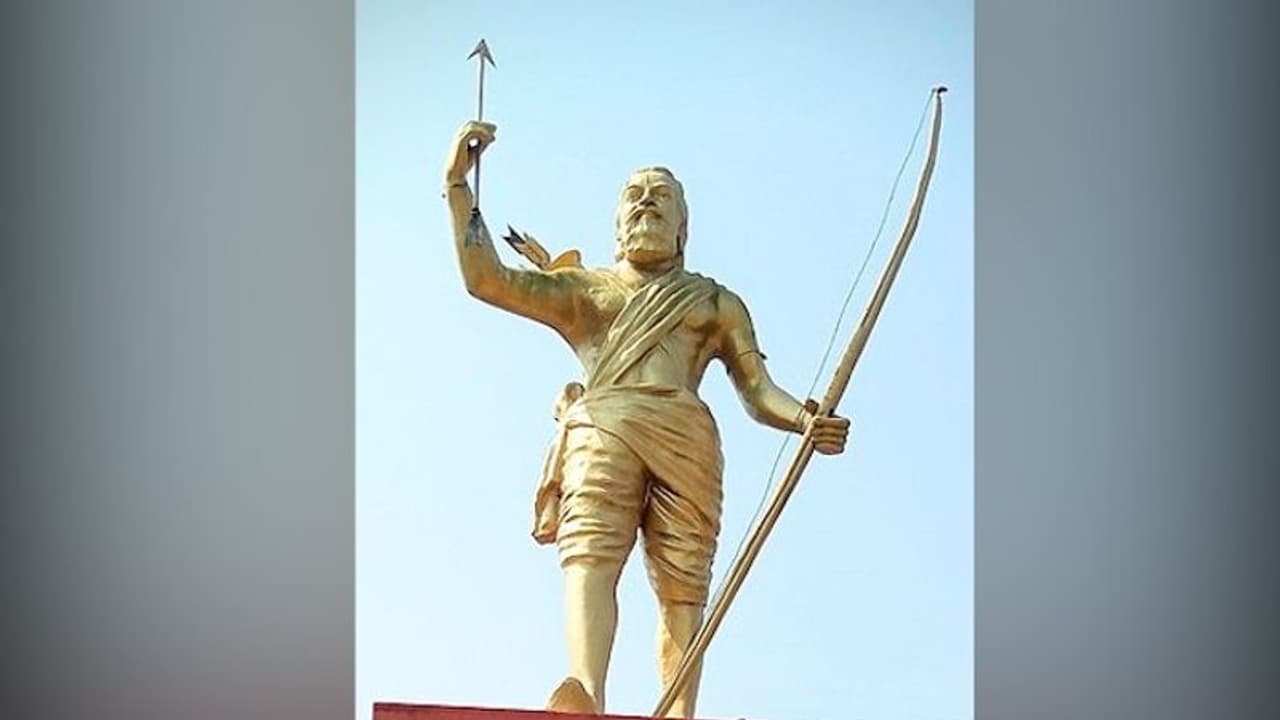Prime Minister Narendra Modi unveiled a 30-foot-tall bronze statue of freedom fighter Alluri Sitharama Raju during his visit to Bhimavaram, Andhra Pradesh.
Prime Minister Narendra Modi unveiled a 30-foot-tall bronze statue of freedom fighter Alluri Sitharama Raju during his visit to Bhimavaram, Andhra Pradesh, on Monday, July 4. The year-long commemorations of the freedom fighter's 125th birthday also begin on the same day

As per the official statement from the PMO, the government is committed to giving due recognition to the contribution of freedom fighters and making people across the country aware of them as part of the Azadi Ka Amrit Mahotsav, a campaign to mark 75 years of Indian independence. The story of Alluri's life is featured on the campaign website under the "Unsung Heroes" section.
Home Minister Amit Shah named Alluri, along with Ramji Gaur and Kumaram Bhim, as one of the prominent leaders from the region who stood up to the Nizams for Telangana's liberation in June of this year.
About freedom fighter Alluri Sitharama Raju:
Alluri Sitharama Raju is thought to have been born in present-day Andhra Pradesh in 1897 or 1898, and he is well-known for spearheading guerrilla resistance against the British in the region at a young age.
According to reports, Raju became a sanyasi (hermit) at 18 and began travelling to the region's hill and tribal areas. Locals admired him for his austerity, knowledge of astrology and medicine, and ability to tame wild animals. As a result, a mystical element was added to his persona.
Following the chapter on Indian nationalism in the NCERT class 10 History textbook, Raju claimed to have a "variety of special powers, he could make correct astrological predictions and heal people, and he could even survive bullet shots." Captivated by Raju, the rebels declared him "an incarnation of God."
Reason Raju became a folk hero:
Locals were becoming increasingly anti-government, as evidenced by the looting of Chintapalle, Krishnadevipeta, and Rajavommangi police stations in August 1922 by 500 tribals led by Raju. They brought approximately 2,500 rounds of ammunition and other supplies with them.
Because hill regions were generally divided into Rampa and Gudem areas or blocks, the movement is known as the 'Rampa rebellion.' From 1922 to 1924, the Manyam or Rampa Rebellion took place. Raju frequently fought British troops during this time, earning him the title "Manyam Veerudu" or "Hero of the Jungle."
Despite his belief in armed rebellion, Raju supported Gandhi's call for non-cooperation. The Indian National Congress's invitation to join the movement spread throughout the country.
As per the NCERT textbook, "Raju spoke of Mahatma Gandhi's greatness, said the Non-Cooperation Movement inspired him and persuaded people to wear khadi and give up drinking." At the same time, he claimed that India could only be liberated through the use of force, not nonviolence."
Warfare was carried out over the next few years, aided by local support, but Raju was captured by the British and executed in 1924.
Raju became a folk hero in the region, and the Indian Postal Department issued a stamp in his honour in 1986, depicting the Indian Independence struggle. On his 122nd birth anniversary in July 2019, the Andhra Pradesh government announced that a new district would be named after him. Alluri Sitharama Raju district took effect on April 4, 2022, from portions of Visakhapatnam district and East Godavari district.
Also Read: India@75 freedom fighters: Surya Sen, who led Chittagong British Armoury raid
Also Read: India@75 Freedom Fighters: Tatya Tope, the general whom the British feared
Also Read: India@75 Freedom Fighters: Chakravarti Rajagopalachari, India's first and last Governor-General
